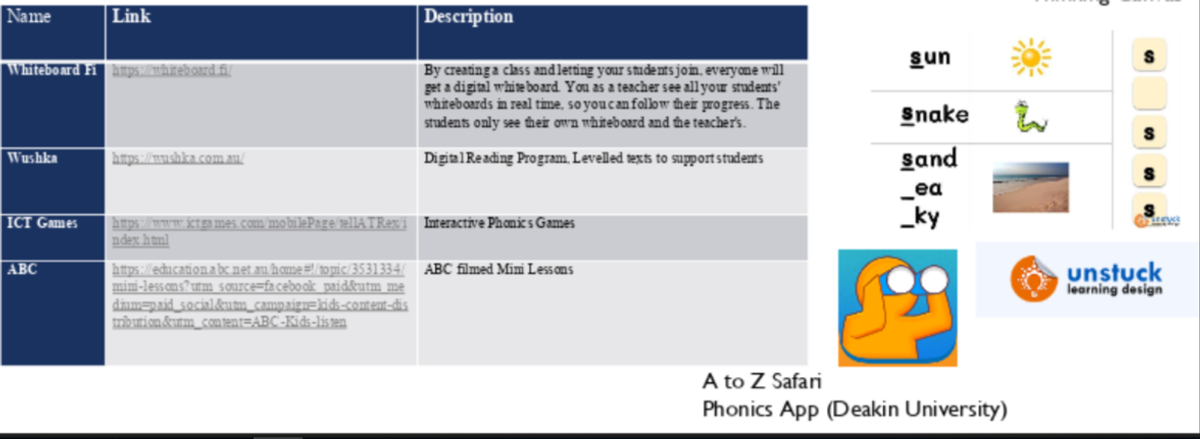Literacy,

Leora Heitlinger
Literacy Learning Specialist.
Good afternoon and welcome back to term 4,
Just to remind you, my next few articles will be about the ‘Big 6’. Last week of last term I spoke about Oral Language. Today I will focus on the Phonics.
Phonics is the mapping of speech sounds (phonemes) to letters (or letter patterns, ie. Graphemes). In English we have 44 spoken sounds, these are represented by hundreds of different letter combinations.
Below is a great video for parents, students and teachers.
How does Phonics relate to reading?
When successful, students…..
- Can convert graphemes to phonemes and phonological blending to read words.
/s/ /e/ /t/
- Can recognise digraphs/trigraphs and blend to real words.
/sh/ /ee/ /t/
- Know that speech sounds can be represented by different letter patterns.
p/ow/d/er (ow can make the o sound like flow or an/ow/ sound like in cow).
When having difficulties, students….
- Skip new words or appeal for help at new words.
- Become overwhelmed by longer words
OR
- Make guesses of words based on pictures or context that may not match the print.
- ‘house’ instead of ‘home’
TEACHING TIPS
Phonics should be taught in an explicit and systematic way, incorporating the explicit teaching of phonemes and graphemes, letter formation and involve multiple exposures with meaningful texts and contexts.

